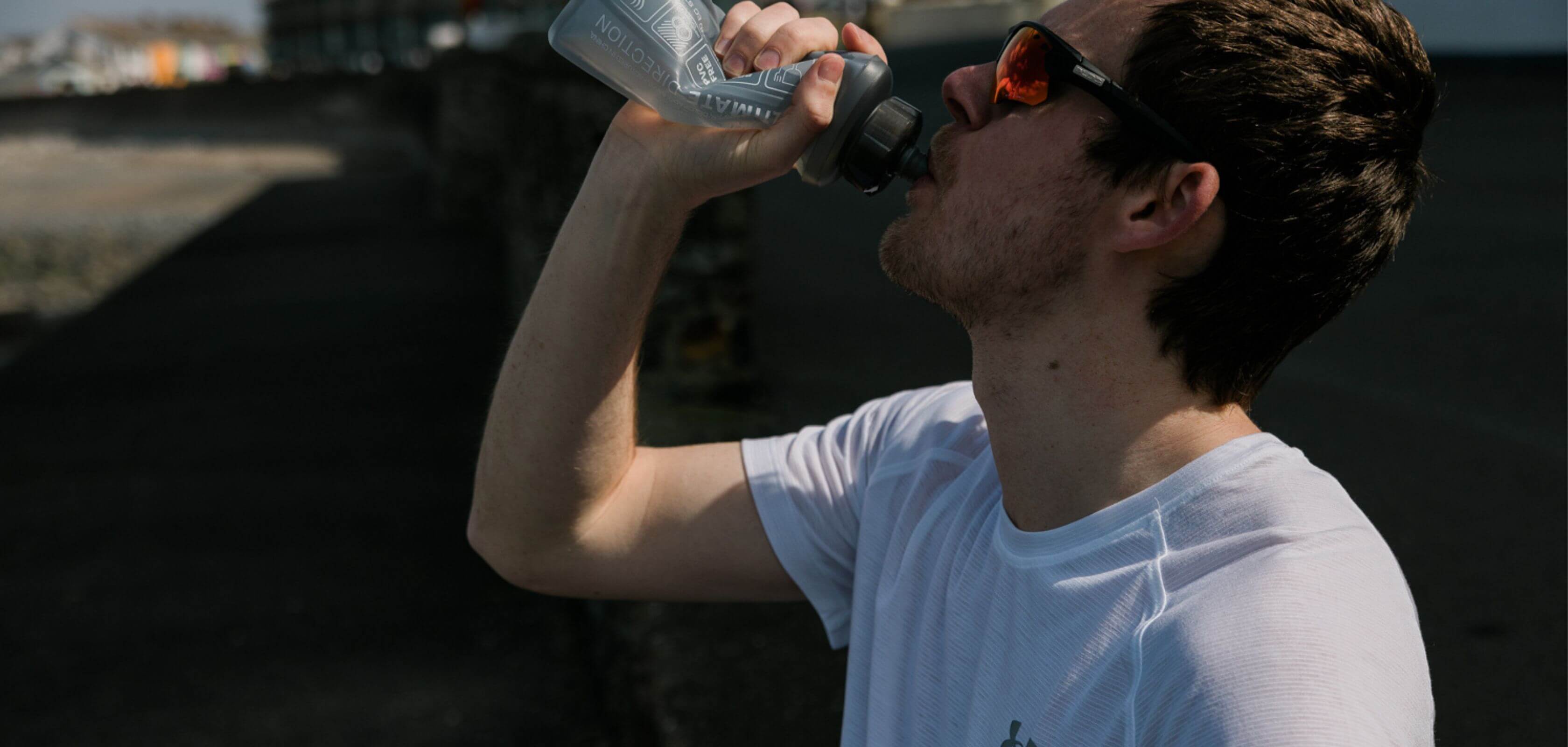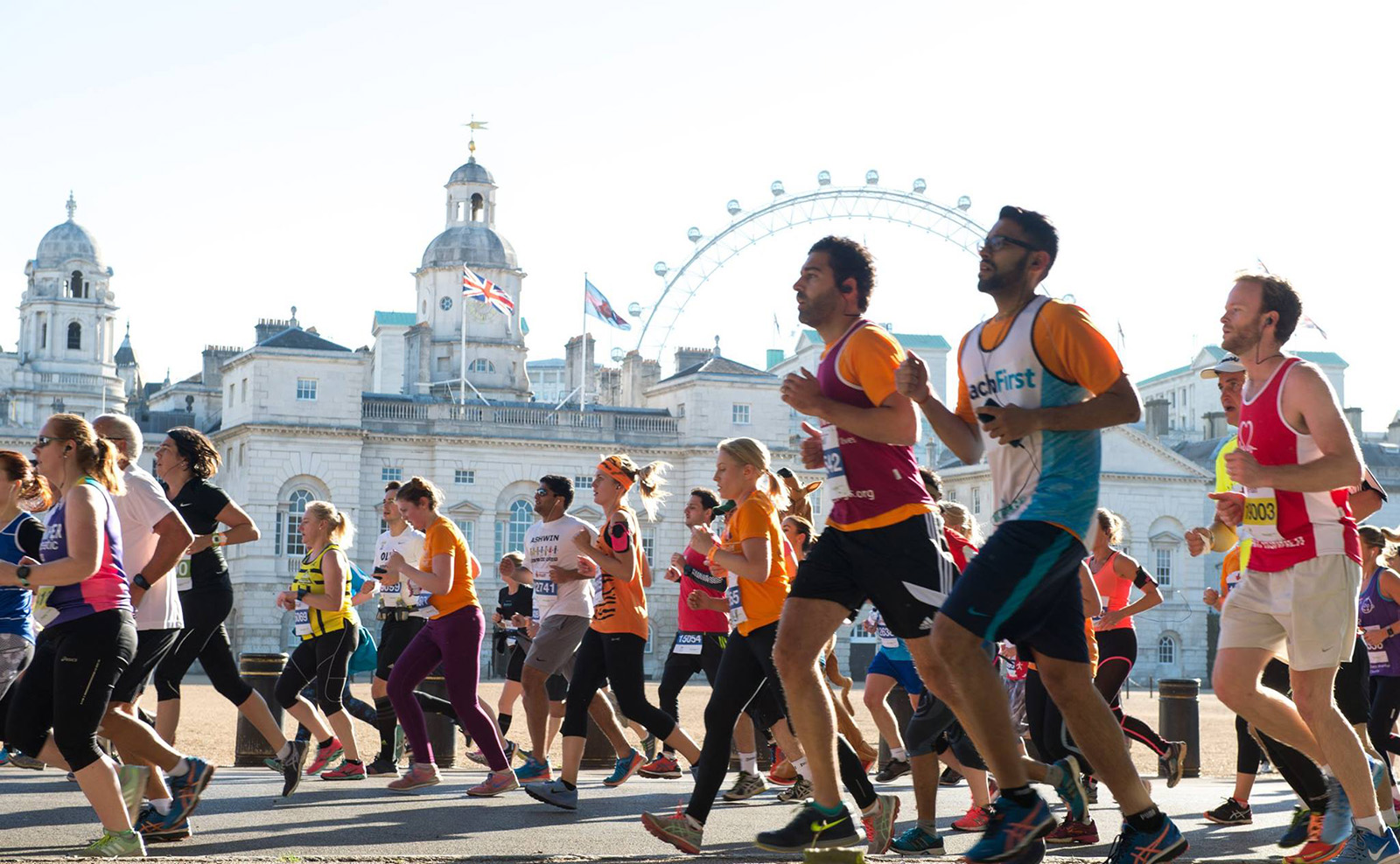When to Return to Running After a Big Race

Striking an even balance between maintaining fitness levels and ensuring a proper recovery is vital to keep you running injury-free. So whatever distance you’re running we answer your most frequently asked questions about how, and when, to return to running after a big race.
How Much Time Should I Take off After a Race?
The general rule of thumb is simple: for every mile you raced, allow one day of recovery before gently returning to running. This means giving your body time to repair muscle fibres, replenish energy stores, and recover from the physical stress of racing.
- For a 5K (3.1 miles): Take at least 3 days of recovery.
- For a 10K (6.2 miles): Aim for about 6 days off running.
- For a half marathon (13.1 miles): Plan for roughly 13 days of recovery.
- For a marathon (26.2 miles): Allow at least 2 weeks, and potentially up to 3 weeks, before resuming normal training.
If your race wasn’t an all-out effort—such as running at marathon pace, treating it as a fun run, or simply running for enjoyment—you can shorten your recovery period.
- Moderate efforts or fun runs: 2 to 6 days off is usually sufficient for a 10K, depending on how hard you pushed yourself.
Factors That Affect Your Recovery Time
Recovery time after a race is shaped by a combination of key factors, each contributing to how quickly you can return to your running routine. The intensity of the race itself plays a significant role: harder, more demanding efforts generally require longer periods of rest to allow your muscles and energy systems to fully recuperate. Experience also matters; novice runners often need additional recovery time compared to seasoned athletes, who may bounce back more swiftly due to their body’s familiarity with stress and more efficient recovery mechanisms.
Age and overall health are equally important considerations, with older runners or those managing underlying health conditions often benefiting from extra rest to support recovery and prevent injury. Ultimately, it’s essential to tune in to how your body feels—lingering soreness or fatigue are clear signals that your body could use a bit more time off before resuming intense training or competition.
What to Do During Your Recovery
Recovery after a race is much more than simply taking a break; it’s about actively supporting your body through rest and self-care. To maximise your downtime, start by prioritising rest days immediately following your event, giving your muscles and mind the chance to reset. Incorporate gentle recovery activities such as stretching, yoga, or foam rolling—these practices can help speed up healing and reduce muscle soreness. Maintaining proper hydration and eating a balanced diet are equally important, as they provide the nutrients your body needs for muscle repair and overall recovery.
Don’t underestimate the value of quality sleep, which is one of the most powerful tools for effective recovery. Once you’ve had a few days off, consider adding low-impact cross-training activities like walking, swimming, or cycling to keep your fitness levels up without placing extra stress on your body. This balanced approach ensures you’re making the most of your recovery period and setting yourself up for future success.
How To Return To Running
When you’re ready to run again, ease back in:
- Start with short, slow runs—think of these as “shakeout” runs, not workouts.
- Keep your pace at least a minute slower than your usual easy pace.
- Avoid speed work, tempo runs, or hill repeats for at least a week after shorter races, and two to three weeks after a marathon.
- Only increase intensity and volume once you’ve completed a week or more of easy running without issues.
How Intense Should my Running Training be When I Return?
When you first return to running, keep your runs easy and relaxed. This means running at a conversational pace - a speed where you can comfortably talk in full sentences without getting out of breath. This approach allows your body to continue recovering while gradually reintroducing the running routine.
Key Guidelines for Post-Race Training Intensity:
- Run at a conversational pace for all sessions until you’ve completed the recommended recovery period (one day per mile raced).
- If you raced a 10k and took 2 days off before returning, continue running easy for another 4 days to complete the 6-day recovery window.
- Focus on comfort, not speed or distance, during these early runs.
Signs You’re Pushing Too Hard:
- Persistent fatigue or feeling unusually tired
- Frequent or lingering colds and minor illnesses
- Elevated resting heart rate, especially in the morning (an increase of 5–10 beats per minute can signal overtraining)
- Loss of motivation or enjoyment in running
How to Monitor Your Recovery:
- Track your resting heart rate 2–3 times per day, especially in the morning. If you notice a consistent increase, it may be a sign you’re not fully recovered and should ease back further.
- Listen to your body—if you feel run down, take extra rest days.
When to Gradually Increase Intensity:
- After you’ve completed your full recovery window at conversational pace and feel fully rested, you can begin to slowly add in more challenging workouts, such as gentle intervals or tempo runs.
- Avoid back-to-back hard sessions; always follow a harder run with an easy day or rest.
By keeping your initial runs easy and monitoring your body’s signals, you’ll return to training safely and set yourself up for stronger performances in the future.
Can Cross-Training Aid my Post-Race Recovery?
Cross-training and weight training are excellent companions to running recovery. By engaging in a variety of low-impact exercises, you can maintain your aerobic fitness and strengthen supporting muscle groups, all while reducing the repetitive stress that running places on your body.
Benefits of Cross-Training for Post-Race Recovery:
Cross-training plays a crucial role in both injury prevention and recovery for runners. By engaging in activities that target different muscle groups, cross-training reduces the risk of overuse injuries often caused by the repetitive impact of running on joints and tissues. Low-impact exercises such as cycling, swimming, or using an elliptical machine not only help prevent injuries but also promote improved recovery. These activities increase blood flow to the muscles, delivering oxygen and essential nutrients that speed up healing and help reduce soreness. Additionally, cross-training helps maintain overall fitness by keeping your cardiovascular system strong and your muscles active, ensuring you don’t lose progress during periods of rest. Beyond physical benefits, strength training and varied cross-training exercises help correct muscle imbalances, boost core strength, and support better running form. Lastly, switching up your routine with new activities can provide mental refreshment, keeping you motivated and engaged throughout your recovery phase.
Recommended Cross-Training Activities:
- Cycling: Provides an effective aerobic workout with minimal impact on joints and muscles.
- Swimming: Offers a full-body, low-impact exercise that supports muscle recovery and cardiovascular health.
- Elliptical Training: Mimics the motion of running without the high-impact stress, making it ideal for active recovery.
- Strength Training: Focuses on building up muscle groups that support your running, particularly the core, glutes, and hamstrings.
- Yoga or Pilates: Improves flexibility, mobility, and balance, helping to address tightness and prevent future injuries.
How to Incorporate Cross-Training into Your Recovery:
- Schedule cross-training sessions on days you’re not running, especially during your initial recovery period.
- Keep the intensity low to moderate—these sessions should leave you feeling refreshed, not fatigued.
- Listen to your body and avoid any activity that causes pain or discomfort.
By making cross-training a regular part of your post-race routine, you’ll recover faster, return to running stronger, and reduce your risk of future injuries.
How Long Should I Wait Before Running Another Event?
Shorter races like 5Ks and 10Ks place less strain on the body and typically require minimal recovery time, allowing runners to participate in these events more frequently. Most runners can safely enter a 5K or 10K every week or every other week, as long as they pay attention to their bodies and avoid pushing themselves into overtraining.
In contrast, longer distances such as half-marathons and marathons demand a far more cautious approach due to the significant physical stress they impose on muscles, tendons, and overall physiology. Proper marathon training should span at least 12 weeks, followed by a two-week taper, totaling a minimum of 14 weeks from the start of training to race day.
After completing a marathon, it’s essential to take at least two weeks of dedicated recovery before even thinking about another marathon effort. This recovery period is crucial for allowing your body to repair deeper muscle and tissue damage that may not be immediately apparent after the race. When planning multiple marathons, it’s realistic to allow about 16 weeks between race days, which includes time for recovery, a new training cycle, and a taper before the next event. For long-distance events, aiming to run no more than two or three marathons per year is recommended.
This schedule provides sufficient time for your body to recover, rebuild, and train effectively for each race, significantly reducing the risk of injury and burnout.
Key Points to Consider:
- The longer the race, the longer your recovery and training cycle should be.
- Even if you feel good a few days after a long race, your body may still be healing from deeper muscle and tissue damage.
- Listen to your body and don’t rush back into racing—adequate rest now sets you up for better performances and fewer injuries in the future.
By spacing out your races appropriately, especially for half-marathons and marathons, you’ll maintain your health, enjoy your running, and be ready to perform at your best each time you toe the start line.

How Can I Speed Up my Running Recovery?
1. Prioritise Post-Run Nutrition
- Consume a combination of carbohydrates and protein within 30 to 60 minutes after finishing your race or run. This timing is crucial because your body is most receptive to nutrients during this window, which jump-starts the repair process and replenishes muscle glycogen and lost electrolytes.
- Aim for a carbohydrate-to-protein ratio of about 3:1 or 4:1 for optimal muscle recovery. For example, chocolate milk, a protein shake with a sandwich, or a protein bar with dry cereal are effective options.
- Continue to eat balanced meals and snacks throughout the day to keep fueling the recovery process.
2. Stretch and Use a Foam Roller
- Post-run stretching helps lengthen muscles, improve flexibility, and reduce soreness. Static stretching after your run can help your muscles relax and increase your range of motion, making future runs feel easier.
- Foam rolling, or self-myofascial release, is highly effective for breaking down muscle adhesions, increasing blood flow, reducing soreness, and speeding up recovery. Focus on major muscle groups like calves, quads, hamstrings, and glutes.
- If you struggle to fit stretching or foam rolling into your routine, consider scheduling a sports massage for similar benefits.
3. Balance Your Training Schedule
- Always follow a hard training day (such as a long run, tempo run, or speed workout) with at least one easy day. This could mean a short, slow run, cross-training, or complete rest.
- This approach allows your muscles time to repair and adapt, reducing the risk of overuse injuries and chronic fatigue.
4. Listen to Your Body
- Monitor for signs of overtraining, such as persistent fatigue, frequent illness, or a higher resting heart rate. If you notice these, take extra rest or reduce your training intensity.
- Recovery is an ongoing process - don’t just focus on the immediate post-run window. Ensure you’re getting enough sleep, staying hydrated, and managing stress throughout your training cycle.
FAQs
Most experts recommend taking at least three to seven days completely off from running after a marathon. This allows your body to recover from muscle soreness and cellular damage. Listen to your body - some runners feel ready after a week, while others may need longer, especially if there’s lingering fatigue or pain.
You should wait until muscle soreness (DOMS) has fully subsided before considering your first run. If you still feel tired, heavy, or notice any aches, give yourself more time. Only return when you feel both physically and mentally ready, and start with a short, easy run or a walk-run session.
Some coaches suggest one day of rest for every mile raced, which would mean about 26 days for a marathon. However, this is just a guideline - actual recovery time varies by individual and effort level. The key is to listen to your body and avoid rushing back into intense training.
Your first run should be short and at an easy pace - around 15 to 30 minutes is ideal. Consider a walk-run approach if you’re unsure. Focus on how your body feels during and after the run, and avoid speedwork or hills until you’re fully recovered.
Active recovery - such as walking, cycling, or swimming at low intensity - can help promote circulation and healing. Gentle stretching, foam rolling, and massage may also aid recovery. Prioritise sleep, hydration, and a balanced diet rich in carbohydrates and protein.
Running too soon increases the risk of injury, prolonged fatigue, and a weakened immune system. Even if you don’t feel sore, your muscles and immune system may still be recovering at a cellular level. Taking adequate rest helps prevent overtraining and long-term setbacks.
It often takes about three to five weeks for most runners to fully recover and return to normal training intensity. Gradually rebuild your mileage and intensity, and consider following a reverse taper plan to ease back into your routine. Always prioritise recovery over rushing back.
Get Race Day Ready
Get all you need for the road, the trails, and the track all in one place, right here at Runners Need. From the latest running shoes, runwear, and equipment to new-in GPS sports watches and massage guns - we have everything you need to make that next run your best run at Runnersneed.
Related articles









